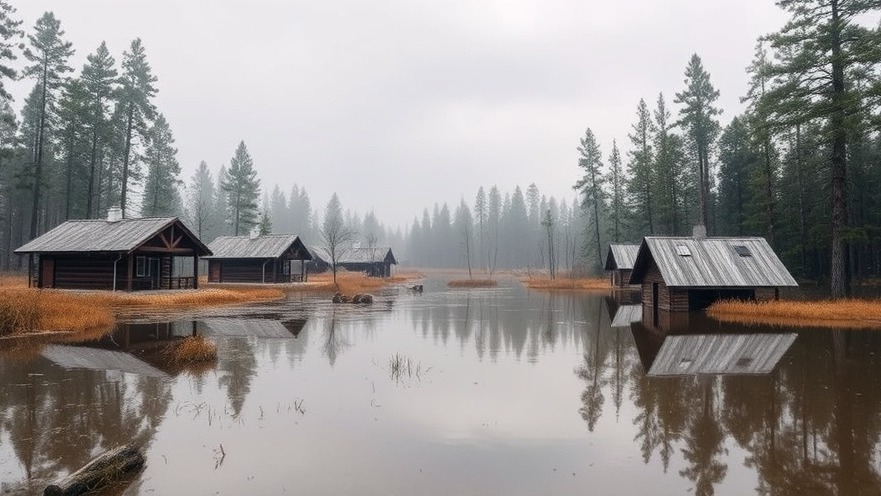
The Struggles of Kerr County Youth Camps Amid Flood Safety Regulations
As Texas grapples with its ongoing flood challenges, the recent tragic events surrounding youth camps in Kerr County have resulted in significant legislative action aimed at enhancing safety. Following the devastating flooding that claimed 27 lives at Camp Mystic during a July 4 gathering, new flood safety legislation, namely House Bill 1 and Senate Bill 1, has entered the spotlight. These measures propose strict safety requirements, particularly the prohibition of cabin placement in floodplains, raising concerns among camp owners and parents alike.
Calls for Consideration from Camp Owners
The owners of three prominent youth camps—Camp Waldemar, Vista Camps, and Camp Stewart—have voiced their apprehensions in a letter to Lt. Governor Dan Patrick, urging reconsideration of these stringent regulations. They argue that while safety is paramount, the cost implications of relocating cabins could be crippling. In their appeal, they requested expert guidance from the Texas Water Development Board to ensure a safe, professionally analyzed solution that respects their operational realities.
Financial advocacy was also a key theme in their letter, emphasizing the need for state support through insurance or grants to alleviate the financial burden on families and communities. This is a pressing concern as school camps not only provide valuable experiences for youth but also play a crucial role in community cohesion.
Resistance from Legislative Bodies
Despite these appeals, key legislators like State Sen. Charles Perry, who spearheaded the legislation, assert that camps must bear the financial responsibility of complying with the new laws. Perry’s position raises questions about the balance of public safety and the financial sustainability of private enterprises such as these camps.
The lawmakers’ reluctance to discuss broader floodplain development restrictions reflects a contentious debate within Texas regarding disaster preparedness. While the intentions behind the legislation are laudable, the impact on local businesses, especially youth camps integral to Texas culture, must not be overlooked.
A Broader Perspective: Emotional and Practical Implications
This scenario sheds light on the emotional and financial landscapes faced by families involved with these camps. Parents have always trusted youth camps as safe havens for their children, offering experiences that foster growth, resilience, and lifelong friendships. However, the recent tragedies cast a shadow of uncertainty over these cherished traditions.
Events like the tragic flooding that occurred at Camp Mystic highlight the crucial need for proper infrastructure and emergency protocols. Families grappling with grief also face a daunting uphill battle in advocating for both safety improvements and financial assurances from the state. The emotional toll cannot be distanced from the financial realities as parents advocate for their children's safety while worrying about exorbitant costs.
Future of Youth Camps in Texas: What Lies Ahead?
As youth camps navigate the implications of impending legislation, stakeholders must find common ground to ensure both safety and sustainability. The dialogue surrounding the financial impact of the bills underscores a need for innovative solutions that protect children while also preserving the future of these camps. One potential solution involves crafting targeted legislation that provides support mechanisms without compromising safety.
Looking ahead, there is an opportunity for collaborative efforts among camp owners, lawmakers, and safety experts to develop guidelines that meet both safety requirements and financial viability. With the voice of parents and camp communities rising, there remains hope that continued dialogue can lead to balanced outcomes that prioritize the safety of children without jeopardizing the existence of beloved camp experiences.
Concluding Thoughts
The challenges presented by the new flood safety regulations reflect broader questions about the balance between safety and financial responsibility in the wake of tragedy. Engaging with stakeholders comprehensively may pave the way for solutions that enhance safety while also ensuring the vibrancy of Texas youth camps continues, providing a safe space for growth and learning.
 Add Element
Add Element  Add Row
Add Row 



Write A Comment